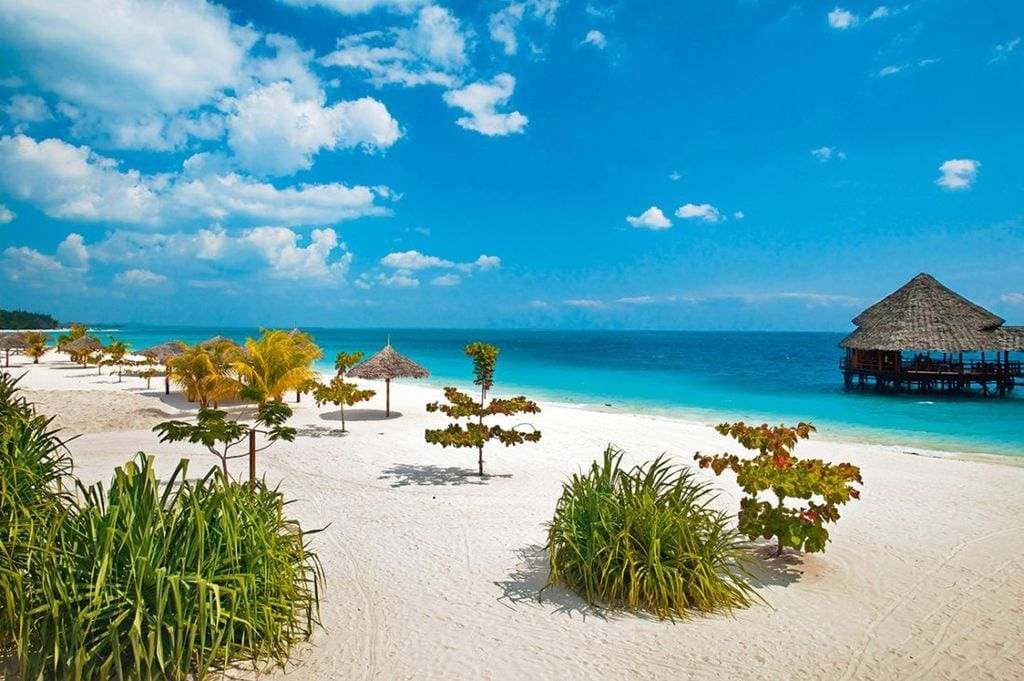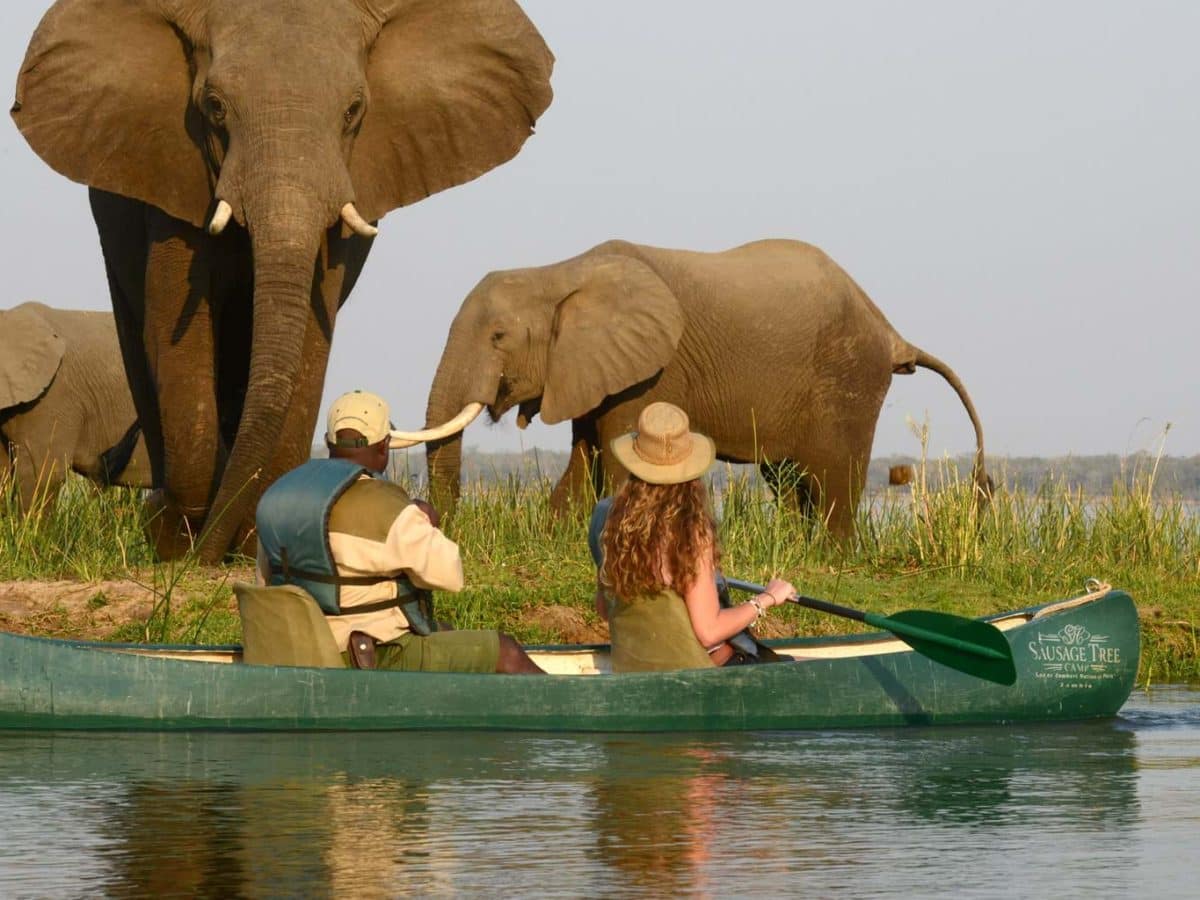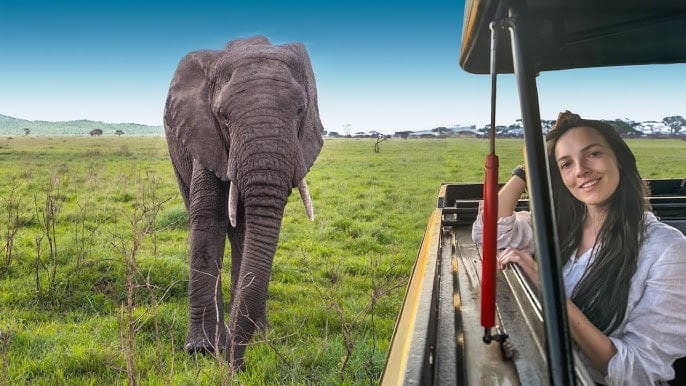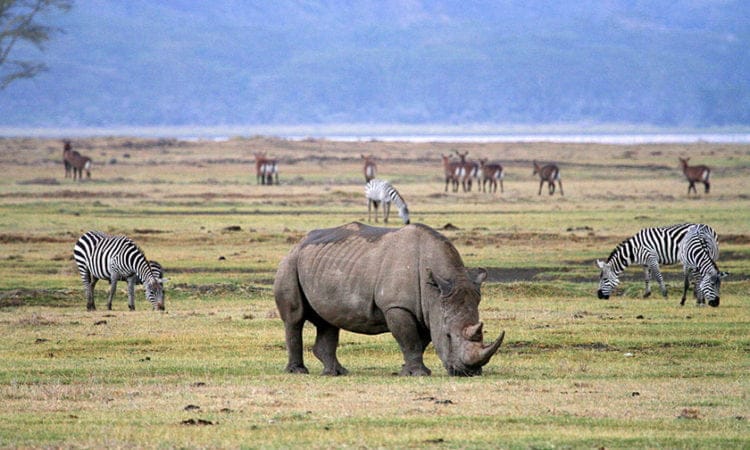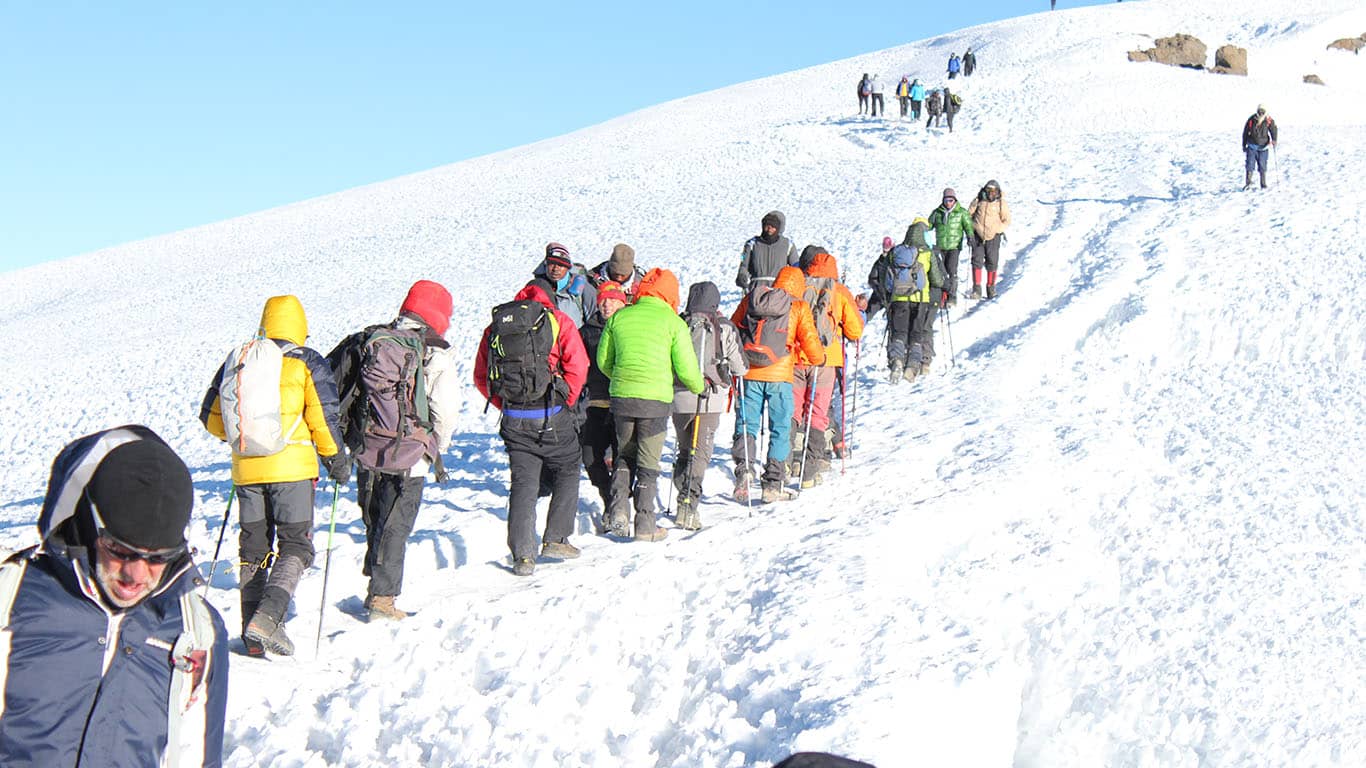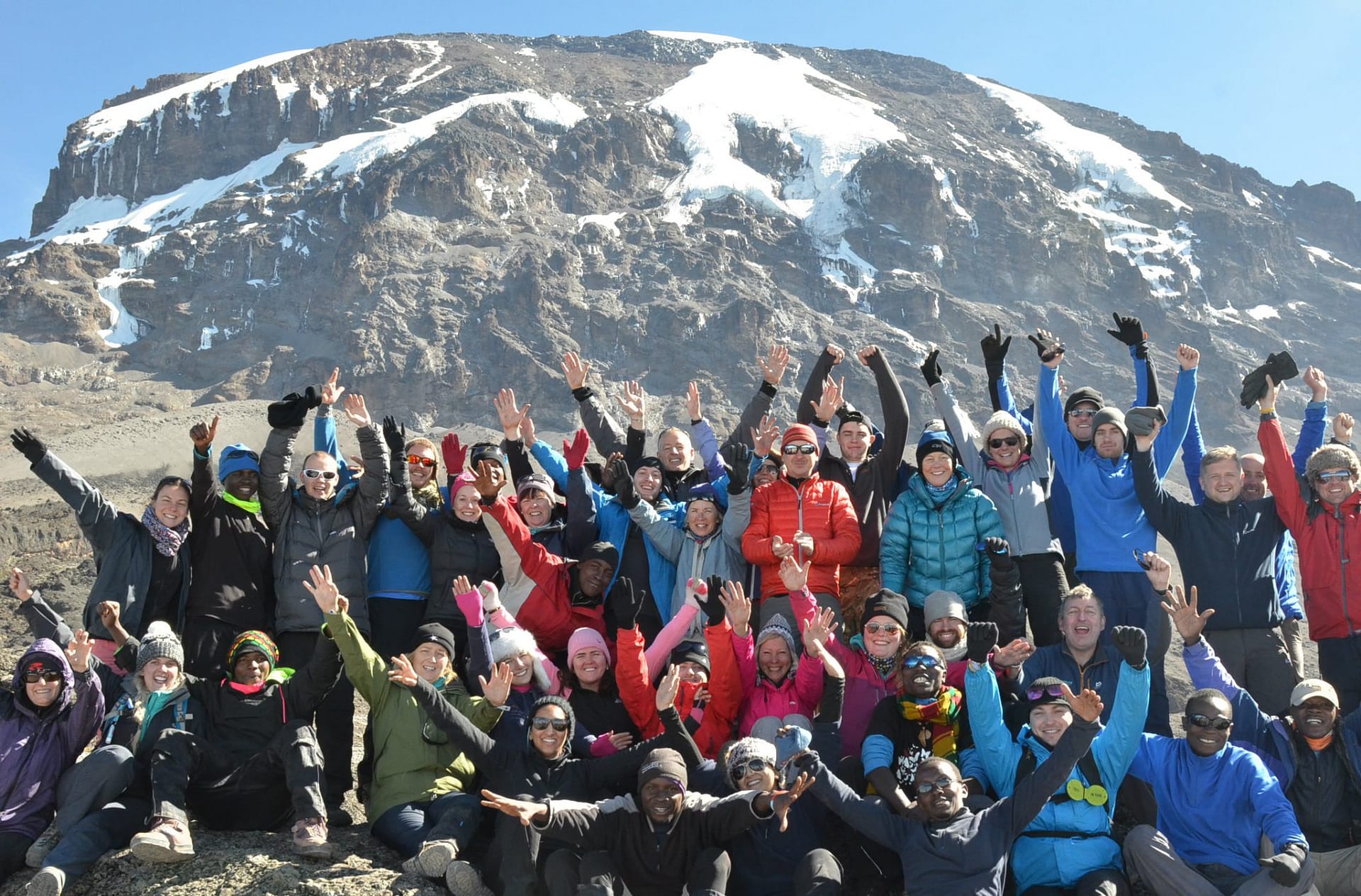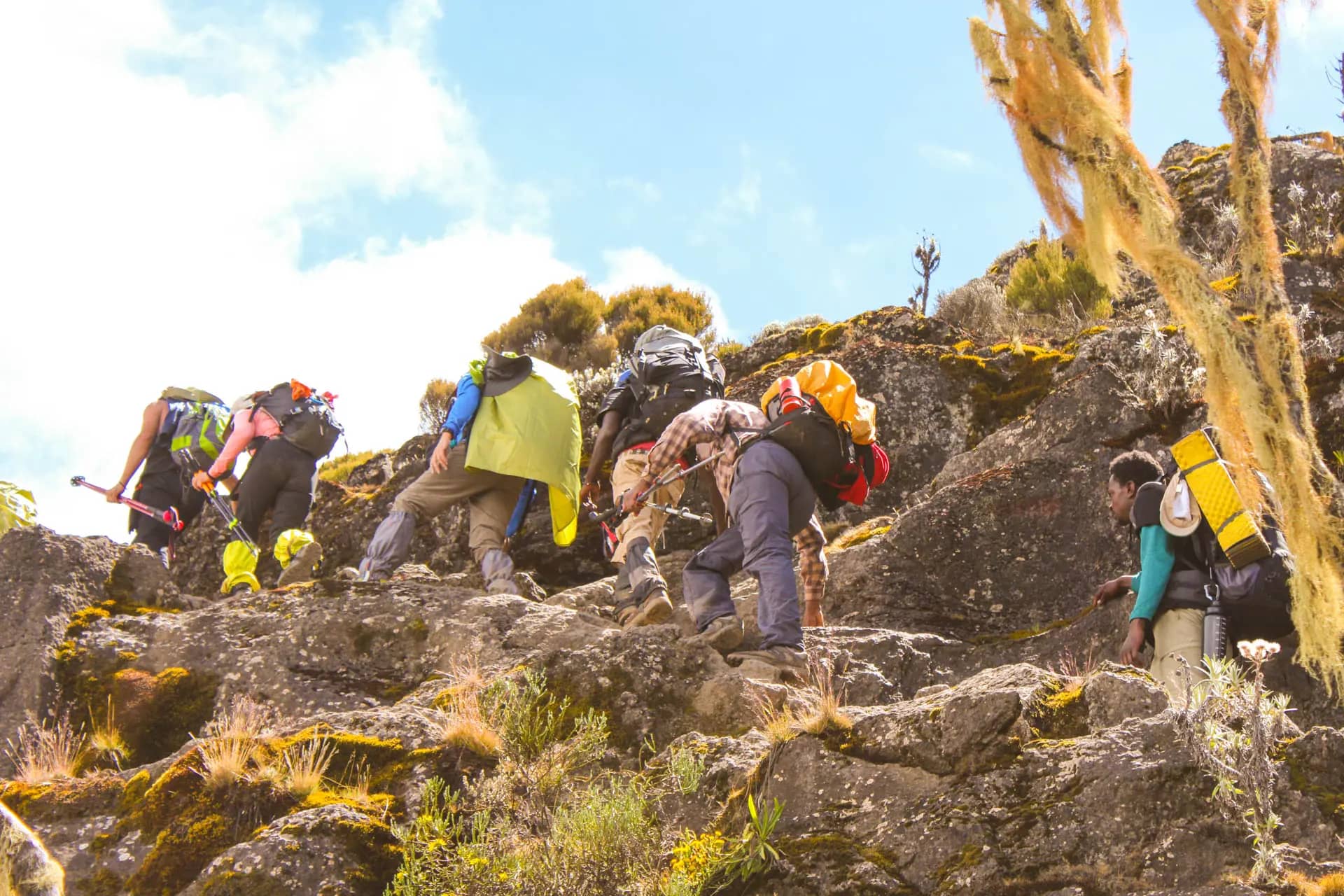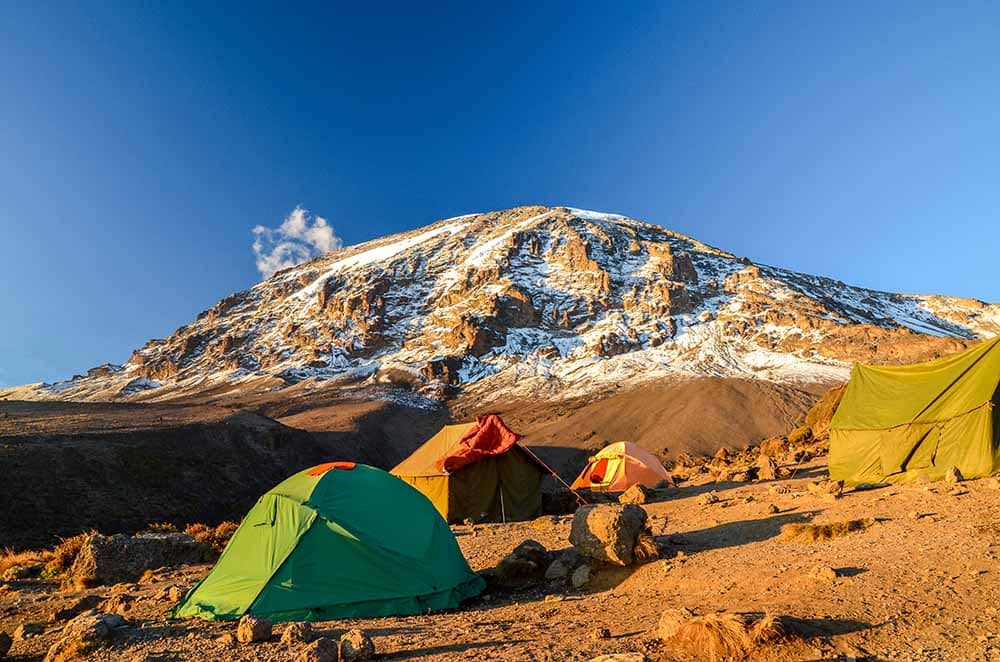$2,660/
Per Person
Embark on the adventure of a lifetime with our 7 days Machame Route trek to the summit of Mount Kilimanjaro, the highest peak in Africa. Known as the “Whiskey Route” due to its more challenging terrain, the 7 days Machame Route offers stunning scenery and a diverse range of landscapes. The Machame route takes you up to the summit from the southwest and descends along the Mweka route.
Starting in the lush rainforest, you’ll pass through all five climatic zones of Kilimanjaro, including moorlands, alpine deserts, and glaciers, each with its own unique beauty and challenges. During the seven-day climb, you’ll be able to see many iconic landmarks, such as the great Barranco Wall, Shira Volcano, Lava Tower, Karanga Valley, views from the southern circuit, Stella Point, and much more. You’ll even conquer the iconic Barranco Wall and be amazed by the surreal “Kilimanjaro giant groundsel”, an extraordinary plant found nowhere else on Earth. The descent goes via the Mweka trail, guaranteeing even more amazing views.
At Zaita Tours, we arrange numerous trips every year along this popular route. The Machame route is tailored with options for both 6-day and 7-day treks, with the longer itinerary providing superior acclimatization and a greater likelihood of reaching the summit successfully. The 7 days itinerary provides ample time for acclimatization, increasing your chances of reaching Uhuru Peak successfully. Machame 7 days is a great route with amazing views suitable for both beginners and experienced trekkers.
Included and Excluded
- Quality, waterproof, four-season private mountain sleeping tents:
- Professional, experienced, mountain guides:
- All Park fees, Rescue fees
- All meals while on the Mountain
- Guides, Porters, cook salaries and park fees
- Quality Mess tents with table and chairs
- Large portions of fresh, healthy nutritious food
- Clean, purified drinking water
- Oximeter
- Medical Kit
- Emergency oxygen
- Fair and ethical treatment of porters
- Accommodation in Arusha/Moshi
- Portable Toilet
- Flights
- Alcoholic and soft drinks
- Visa fees
- Tips Personal spending monies for souvenirs etc.
- Travel insurance
Highlights of the Tour
- Experience a wide range of landscapes, from lush rainforests and moorlands to alpine deserts and glaciers.
- Conquer the iconic Great Barranco Wall, a thrilling and rewarding climb that offers spectacular views.
- Walk across the expansive Shira Plateau with panoramic views of Kibo Peak and the surrounding landscape.
- Acclimatize at the dramatic Lava Tower, an impressive rock formation at 4,640 meters, enhancing your chance of summit success.
- Increase your chances of reaching Uhuru Peak with a 7-day itinerary designed for optimal acclimatization.
- Immerse yourself in the local culture with knowledgeable guides who share insights about the flora, fauna, and history of Kilimanjaro.
- Spot unique wildlife in the rainforest, including colobus monkeys, and enjoy diverse flora along the trail.
- Marvel at the breathtaking views of Kilimanjaro’s glaciers as you approach the summit.
- Benefit from the expertise of experienced guides and a dedicated support team, ensuring a safe and enjoyable trek.
- Enjoy well-planned logistics, including quality camping equipment, delicious meals, and porter support, allowing you to focus on the climb.
Itinerary
Begin your adventure with a drive from Moshi to the Machame Gate. After registration, start your trek through the lush rainforest, home to a variety of wildlife and unique flora. The trail gradually ascends to Machame Camp, offering your first night under the stars on Kilimanjaro.
- Distance: 11 km
- Hiking Time: 5-7 hours
- Habitat: Rainforest
Leave the rainforest behind as you ascend a steep ridge to the Shira Plateau. Enjoy panoramic views of the surrounding landscapes and the impressive Kibo Peak. Arrive at Shira Camp in the afternoon, where you can relax and acclimatize.
- Distance: 5 km
- Hiking Time: 4-6 hours
- Habitat: Moorland
Today is crucial for acclimatization. Trek east towards the Lava Tower (4,640m) for a challenging ascent and then descend to Barranco Camp. This “climb high, sleep low” strategy helps your body adjust to the altitude. The day ends with stunning views of the Barranco Wall.
- Distance: 10 km
- Hiking Time: 6-8 hours
- Habitat: Semi-desert
Conquer the Great Barranco Wall, a challenging yet exhilarating climb. Traverse the ridges and valleys, passing through the alpine desert to reach Karanga Camp. Enjoy the breathtaking views and take the afternoon to rest and acclimatize.
- Distance: 5 km
- Hiking Time: 4-5 hours
- Habitat: Alpine Desert
Continue your ascent towards Barafu Camp, the base camp for your summit attempt. The trail is tough but rewarding, with stunning views of the summit and surrounding glaciers. Arrive in the afternoon, rest, and prepare for the final ascent to Uhuru Peak.
- Distance: 4 km
- Hiking Time: 4-5 hours
- Habitat: Alpine Desert
Begin your summit attempt around midnight. The trail to Stella Point is steep and challenging, but reaching the summit at Uhuru Peak (5,895m) is an unforgettable achievement. After celebrating, descend back to Barafu Camp for a short rest, then continue down to Mweka Camp for your final night on the mountain.
- Distance: 17 km
- Hiking Time: 10-14 hours
- Habitat: Arctic to Moorland
Enjoy your final breakfast on Kilimanjaro before descending through the rainforest to Mweka Gate. Celebrate your achievement and receive your summit certificates. Transfer back to Moshi, where a well-deserved rest awaits.
- Distance: 10 km
- Hiking Time: 3-4 hours
- Habitat: Rainforest
Frequently Asked & Question
The success rate of the 7 days Machame Route on Mount Kilimanjaro is generally quite high, with estimates ranging between 85% and 90%. This high success rate is attributed to several key factors:
Optimal Acclimatization: The 7-day itinerary allows for better acclimatization, as it includes an additional day compared to shorter itineraries. This extra time helps trekkers adjust to the altitude, reducing the risk of altitude sickness and improving the chances of reaching the summit.
Gradual Ascent: The Machame Route’s design includes a "climb high, sleep low" approach, which aids in acclimatization. For example, the trek to Lava Tower on Day 3 reaches an altitude of 4,640 meters before descending to Barranco Camp at 3,900 meters.
Experienced Guides: Reputable tour operators provide experienced guides who monitor trekkers' health and progress, offering advice and support to ensure safety and success.
Physical Preparation: Trekkers on the Machame Route often prepare physically before the climb, contributing to higher success rates. Proper training and fitness levels play a crucial role in the ability to handle the demanding trek.
Mental Resilience: The diverse and scenic route keeps trekkers motivated, and the structured itinerary helps maintain a steady pace, allowing for adequate rest and recovery.
With these advantages, the 7 days Machame Route is an excellent choice for those aiming to reach the summit of Kilimanjaro, offering a balance of challenge, beauty, and a higher likelihood of success.
The best months to climb Kilimanjaro are during the dry seasons, which provide the most favorable weather conditions for trekking. These periods are:
January to March
Weather: These months offer cooler temperatures and lower precipitation, particularly at higher altitudes.
Crowds: Slightly less crowded compared to the summer months.
Views: Clear skies provide stunning views of the landscape and the mountain.
June to October
Weather: This is the peak trekking season due to stable weather conditions with minimal rain.
Crowds: This is the most popular time to climb, so expect more trekkers on the trails.
Views: Clear, sunny days make for excellent trekking and photography conditions.
November and December
Weather: These months can also be a good time to climb, with December being particularly popular. However, be aware that November can have short rains.
Crowds: Less crowded than the peak season from June to October.
Key Considerations:
Weather Stability: Dry seasons provide the most stable and predictable weather, reducing the risk of rain and slippery trails.
Temperature: Nighttime temperatures can still be very cold, especially at higher elevations, so proper gear is essential.
Preparation: Regardless of the month, adequate physical preparation and acclimatization are crucial for a successful and safe climb.
Planning your Kilimanjaro trek during these optimal months increases your chances of a successful and enjoyable experience.
The number of hours trekked each day on Kilimanjaro varies depending on the route, the specific day's terrain, and the itinerary. Here's a general overview of what to expect in terms of daily hiking hours for the 7 days Machame Route:
Day 1: Machame Gate to Machame Camp
Hiking Time: 5-7 hours
Distance: 11 km / 7 miles
Habitat: Rainforest
Day 2: Machame Camp to Shira Camp
Hiking Time: 4-6 hours
Distance: 5 km / 3 miles
Habitat: Moorland
Day 3: Shira Camp to Lava Tower to Barranco Camp
Hiking Time: 6-8 hours
Distance: 10 km / 6 miles
Habitat: Semi-desert
Day 4: Barranco Camp to Karanga Camp
Hiking Time: 4-5 hours
Distance: 5 km / 3 miles
Habitat: Alpine desert
Day 5: Karanga Camp to Barafu Camp
Hiking Time: 4-5 hours
Distance: 4 km / 2 miles
Habitat: Alpine desert
Day 6: Barafu Camp to Uhuru Peak to Mweka Camp
Hiking Time: 10-14 hours (Summit Day)
Ascent to Uhuru Peak: 6-8 hours
Descent to Mweka Camp: 4-6 hours
Distance: 17 km / 11 miles
Habitat: Arctic to Moorland
Day 7: Mweka Camp to Mweka Gate
Hiking Time: 3-4 hours
Distance: 10 km / 6 miles
Habitat: Rainforest
Key Points:
Varied Daily Hours: Depending on the day, you might hike for as few as 4 hours or as many as 14 hours on summit day.
Summit Day: This is the longest and most strenuous day, starting around midnight and involving a tough ascent followed by a long descent.
Acclimatization Days: Some days are shorter to allow for better acclimatization and rest.
Pace: The pace is generally slow and steady to ensure safety and effective acclimatization.
This schedule ensures adequate time for acclimatization and rest, maximizing the chances of reaching the summit safely.
Snow can fall on Mount Kilimanjaro throughout the year, but there are certain months and conditions when snowfall is more likely. Kilimanjaro's snow and ice are primarily found at the higher elevations, particularly above 5,000 meters (16,400 feet), in the summit zone and on the glaciers.
Months with Higher Likelihood of Snowfall:
Wet Seasons:
March to May: This is the long rainy season on Kilimanjaro, and while most of the precipitation at lower elevations falls as rain, it can snow at higher altitudes.
November: The short rainy season also increases the chances of snowfall on the upper parts of the mountain.
Dry Seasons:
January to February: Though this is generally a drier period, it is also a colder time of year, which can result in snowfall at higher elevations.
June to October: Snowfall can still occur, especially at the summit, due to the cold temperatures at high altitudes. However, these months are typically drier and more stable in terms of weather.
Key Factors Affecting Snowfall:
Elevation: Snow is more common and persistent above 5,000 meters, particularly near the summit and the glaciers.
Temperature: Cold temperatures at high elevations facilitate snowfall, even during the drier months.
Climate Variability: Kilimanjaro's weather can be unpredictable, and sudden snowstorms can occur at any time of the year.
While snow can fall at any time, the wet seasons (March to May and November) are generally the most likely periods for snowfall. Trekkers should be prepared for cold and potentially snowy conditions when planning their ascent, regardless of the time of year.
